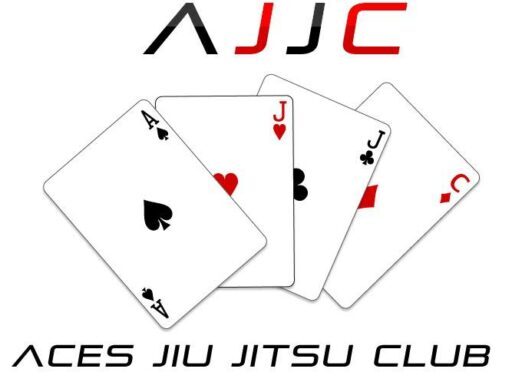People often tout Brazilian Jiu-Jitsu for being a highly efficient and effective system for self defense. Because self defense is a highly nebulous term that doesn’t really mean much to people who don’t already understand it, often it is misused. However, Brazilian Jiu-Jitsu IS, objectively, a highly effective tool for self defense and fighting. Here are the top 5 ways that Brazilian Jiu-Jitsu gives its practitioners great odds in one on one self defense situations…
- Safe full intensity live training. When one looks at any art other than a grappling art, there is severe risk to practicing at full intensity. Here’s the thing, self defense isn’t entirely about having a set of moves, but rather being used to having another person trying to hurt you. If you TRULY want to develop self defense skills you need to experience full intensity on a regular basis. If that full intensity comes in the form of hitting and getting hit, you will suffer a far greater degree of wear and tear than if that intensity comes in the form of control and submissions on the ground. And the truth is that that is where most fights end up anyways, so jiu-jitsu gives its practitioners a set of tools to be able to quickly and safely dispatch a single attacker. The intensity at which jiu-jitsu can be safely practiced is perhaps the quality that makes it best suited for self defense.
- Techniques based on connection and leverage. Many arts that tout themselves as being appropriate for self defense rely on techniques that involve explosion. You explode into a kick. Explode into a punch. Instead, jiu-jitsu is all about connecting oneself to one’s opponent and maintaining that connection in order to improve position. The very principles upon which grappling as a whole is based make grappling crucial to effective self defense. It is far easier to close distance than it is to track movement in order to land a knockout punch. More importantly, connection effectively reduces the importance of size and strength in an altercation. Once a jiu-jitsu practitioner gets a firm grasp on an assailant, that assailant’s ability to do damage goes down if they are not a trained grappler.
- Techniques that can render an opponent unconscious or incapacitated. When one looks at the majority of “self defense” arts, the action that the defender is taught to take puts the attacker in immense pain, but still with full use of all 4 limbs and still completely conscious. Many arts teach a groin strike, or an eye gouge. Both the groin and the eyes are hard to land a direct hit on. Krav Maga, for example, teaches many techniques involving peeling a person’s face away causing them temporary pain and then running. Self defense skills MUST include the ability to break away and run, but if an assailant is pursuing someone, their best option is to incapacitate that assailant either by breaking a lower extremity or by rendering them unconscious with a choke. Jiu-jitsu provides its practitioners with a systematic way to do one or both of these, taking a lot of the guesswork out of the equation. Generally, once someone has decided to attack you, they will continue to attack you until they either can’t or until their attack is successful, causing them pain is not likely to be an effective deterrent.
- The ability to slow down attacks through space management and control. Jiu-jitsu operates best in 2 places: the clinch and the ground, both crucial elements to effective self defense. A well educated jiu-jitsu practitioner knows how to get from out of clinch to in the clinch without getting hurt. Once at a safe distance (in range), the jiu-jitsu practitioner is able to go to work intelligently. Space management is crucial to self defense. If a person is being attacked and is unable to control the distance between themselves and their assailant, there’s a good chance that their self defense will fail. In most one on one altercations, the attacker is looking to close distance so they can deliver damaging blows from a comfortable distance. Jiu-jitsu gives its practitioners the ability to control that distance better than many other styles that tout themselves for self defense.
- Stress inoculation. Because of item #1, the ability to practice the self defense skills of jiu-jitsu at full intensity, most jiu-jitsu practitioners have a level of calm under pressure that is much better than practitioners of other arts. The number one skill for self defense is the ability to stay calm and relaxed when being attacked, coincidentally it is the number one skill that jiu-jitsu practitioners learn from day one. Jiu-jitsu competitors possess this but at a much higher level.
Jiu-jitsu is ideal for self defense. If you train jiu-jitsu you know that you can handle yourself well against most people. For those of you out there who do jiu-jitsu what do you find to be the ways that it prepares you for self defense situations?

Emil Fischer is a Jiu-jitsu Black Belt and BJJ competitor training under Pablo Angel Castro III at Strong Style MMA in Cleveland Ohio. An avid writer and competitor, Emil has amassed an extensive competition record. Most notably, Emil is a 2 time gold medalist at the IBJJF No Gi Pans, and has a submission victory record of 5-1 at Fight To Win Pro which includes purple belt no-gi light heavyweight championship
Emil’s sponsors are Impact Mouthguards, Cleveland Cryo, The Terphouse, Meerkatsu, Eddys on Coventry and Nottarookie. He is a Ludwig Van and Vanguard Kimono brand ambassador.

